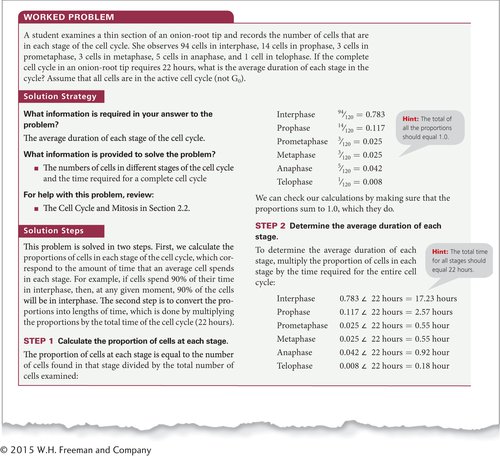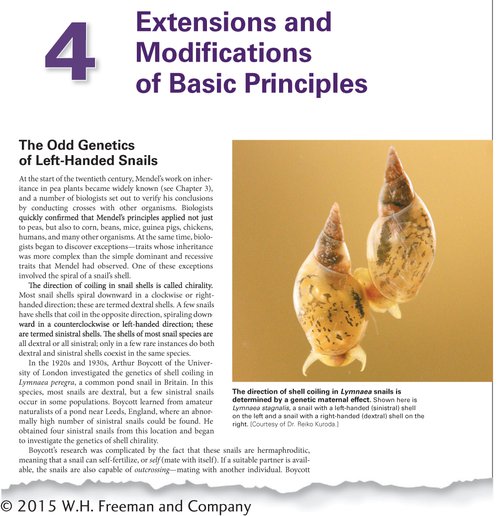New to the Third Edition
The third edition builds on successful features of the first two editions of Genetics Essentials: Concepts and Connections and provides an up-
Connected Learning Paths for Core Topics At the heart of this revision is the connection between the book and its media. The media resources were developed alongside the text in order to create a connected learning path from the book throughout the media package. Through extensive reviewing we identified the genetics topics and skills that students find most difficult. We then designed our media to include the types of resources that instructors felt would best help students understand these topics, study, and practice problem solving—
a key skill that is crucial to understanding genetics. To give you an idea of how our media resources connect with the book, here are a few examples of the learning paths we visualized for two of the topics that are consistently noted by instructors as difficult for their students. 
New Problem-
Solving Videos offer students valuable help by reviewing basic problem-solving strategies. The problem- solving videos demonstrate an instructor working through problems that students find difficult in a step- by- step manner. Page xvNew Online Branched Tutorials identify where students have difficulty and route them through the steps of the problem according to the answers they enter. Hints allow students to receive feedback along the way, as if they were working the problem with an instructor.
New Online Worked Problems allow students to step through a worked problem online in the same format that they’ve seen in the book. Hints provide feedback as they work through the problem.
Updated and New Animations/Simulations help students understand key processes in genetics by outlining them in a step-
by- step manner. The animations and simulations now include assessment questions at the end to help students evaluate whether they understood the concept or technique they viewed. Comprehensively Revised Assessment All media resources have undergone extensive rewriting, reviewing, and accuracy checking.
Online End-
of- include nearly all of the end-Chapter Problems of- chapter problems from the text, converted to a self- graded multiple- choice and drop- down menu format for quizzing, homework, or student practice. LearningCurve allows students to test their comprehension of the chapter concepts with questions similar to the Comprehension Questions at the end of each chapter. The system adapts to each student’s individual level of preparedness by giving them questions at varying levels of difficulty depending on whether they answer a question without any help, if they need help but eventually get the question right, or if they are unable to answer the question. Links to the appropriate e-
Book section, hints, and feedback help students realize where they need more practice on a topic. New Online Reading Quizzes test whether students have comprehended the basic concepts in the chapter they’ve just read.
The Test Bank contains at least 50 multiple-
choice and short- answer questions per chapter.
Nature Genetics Articles with Assessment engage students with primary research and encourage critical thinking. Specifically selected for both alignment with text coverage and exploration of identified difficult topics, the Nature Genetics articles include assessment questions that can be automatically graded. Some of the open-
ended (non- multiple- choice) questions are also suitable for use in flipped classrooms and active learning discussions either in class or online.
All of the new media resources for Genetics: A Conceptual Approach will be available in our new  system. LaunchPad is a dynamic, fully integrated learning environment that brings together all of our teaching and learning resources in one place. It also contains the fully interactive e-
system. LaunchPad is a dynamic, fully integrated learning environment that brings together all of our teaching and learning resources in one place. It also contains the fully interactive e-
Newly Updated Clicker Questions allow instructors to integrate active learning into the classroom and to assess students’ understanding of key concepts during lectures. Available in Microsoft Word and PowerPoint, numerous questions are based on the Concept Check questions featured in the textbook.
New Lecture PPTs have been developed to minimize preparation time for new users of the book. These files offer suggested lectures, including key illustrations and summaries that instructors can adapt to their teaching styles.
Textbook Images and Tables are offered as high-
resolution JPEG files. Each image has been fully optimized to increase type sizes and adjust color saturation. These images have been tested in a large lecture hall to ensure maximum clarity and visibility. The Solutions and Problem-
Solving Manual (written by Jung H. Choi, Georgia Institute of Technology, and Mark E. McCallum, Pfeiffer University) contains complete answers and worked-out solutions to all questions and problems in the textbook. The manual has been reviewed for accuracy and has been found to be an indispensable tool for success by students. The Solutions Manual is also available in print (ISBN: 1- 4641- 5092- 3).
New and Reorganized Content
The third edition addresses recent discoveries in genetics corresponding to our ever-
NEW Epigenetics Content The coverage of epigenetics has been significantly updated and expanded in Chapter 12. Briefer discussions of epigenetics are now in Chapters 4, 8, and 16.
Other new and updated content includes the following:
New molecular genetics section: “The Molecular Nature of Alleles” (Chapter 3)
New section on conditional probability (Chapter 3)
Extensively revised section on dosage compensation (Chapter 4)
Significantly expanded section on chromosome rearrangements (Chapter 6)
Expanded discussion of the discovery of DNA structure, including Franklin’s contribution (Chapter 8)
New section on CRISPR RNAs (Chapter 10)
New section: “Long Noncoding RNAs Regulate Gene Expression” (Chapter 10)
Updated and expanded discussion of changes in chromatin structure (Chapter 12)
New section on Illumina sequencing (Chapter 14)
Revised section on DNA fingerprinting (Chapter 14)
Updated and expanded discussion of genome-
wide association studies (Chapter 15) Updated discussion of metagenomics (Chapter 15)
New section on evolution through changes in gene regulation (Chapter 18)

Reformatted Worked Problems walk students through difficult quantitative concepts in an easy to follow manner, presenting a Solution Strategy and Solution Steps for each worked problem. Hint balloons remind students of key points to keep in mind or refer them back to a specific part of the text to review.
Page xviiNEW Figure-
Based End- bring a visual aspect to problem solving, engaging students closely with figures in each chapter and helping them assess their understanding of key concepts and processes.of- Chapter Problems NEW Introductory Stories Each chapter begins with a brief introductory story that illustrates the relevance of a genetic concept that students will learn in the chapter. These stories—
a favorite feature of past editions— give students a glimpse of what’s going on in the field of genetics today and help to draw them into the chapter. Among the new introductory story topics are “The Odd Genetics of Left- Handed Snails” and “Building a Better Banana.” End- of- chapter problems specifically address concepts discussed in most introductory stories, both old and new.
